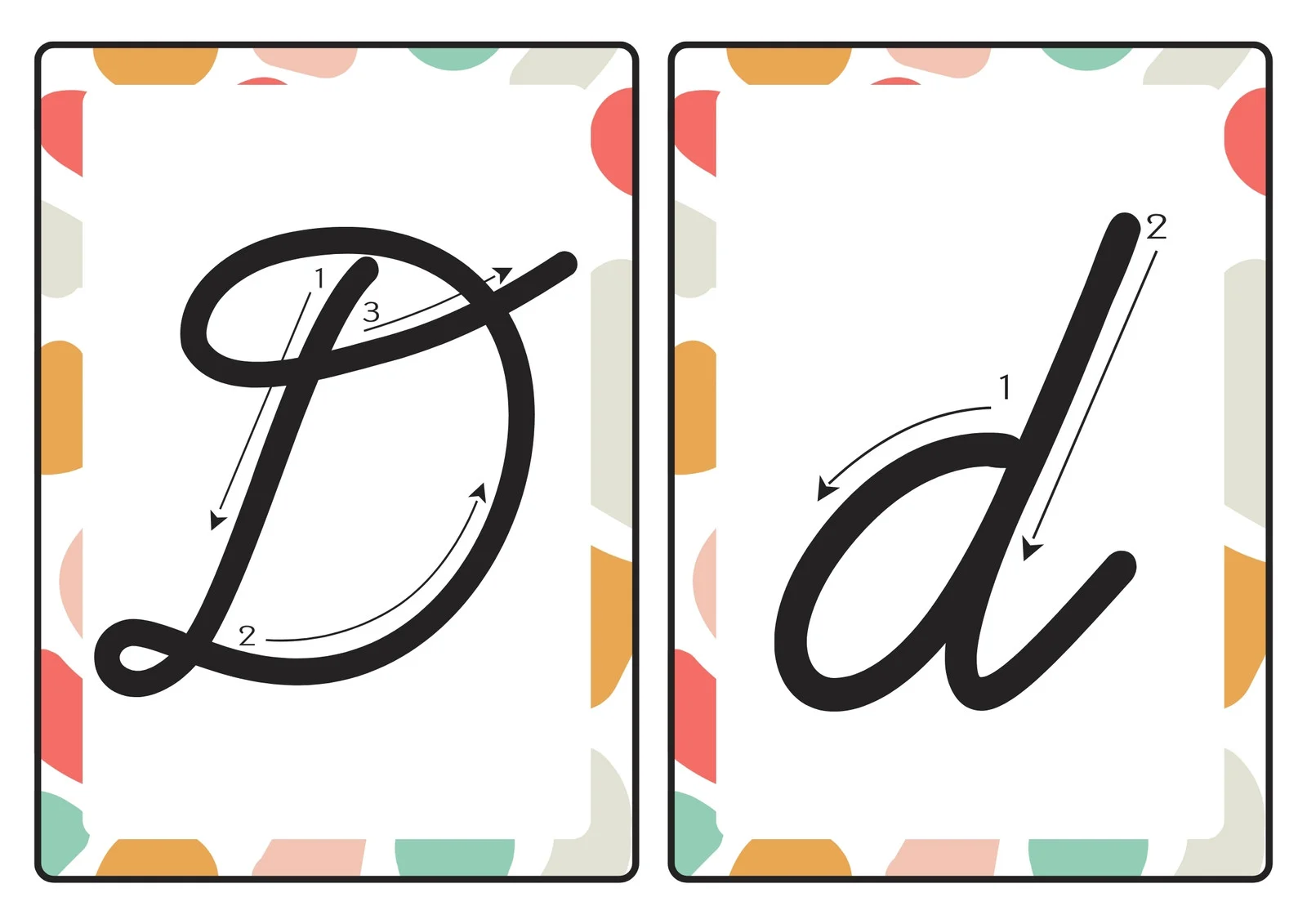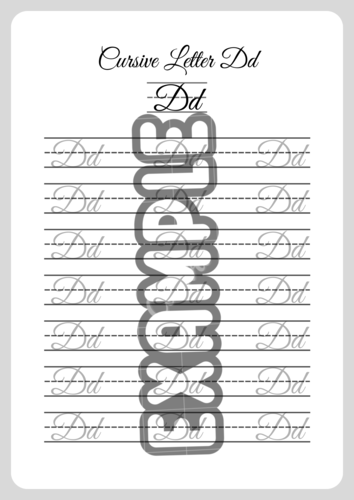
Transform your text into 96 unique styles across 12 categories!
Writing a cursive capital 'D' involves a specific set of strokes to create a smooth and connected script. Here's a step-by-step guide on how to write a cursive capital 'D':

Begin slightly above the line where you want the 'D' to rest. Make a vertical stroke downward, similar to the lowercase 'd'.
Start with a small loop at the top, then make a vertical stroke downward. Finish with a small loop at the bottom.
Ensure a smooth transition when connecting 'D' with other letters by maintaining a continuous flow between the strokes.
Tip 1: Practice the vertical stroke and loops of both uppercase and lowercase 'd' for consistency in your cursive writing.
Tip 2: Focus on the proportion of the loops, ensuring they are balanced and well-formed.
Tip 3: Experiment with the size and slant of your cursive 'D' to find a style that suits your preferences while maintaining legibility.
If you are looking for a Cursive D worksheet in PDF format, you can find and download it. This online resource offers a free PDF worksheet that includes both uppercase and lowercase Cursive D letters for practice.

When learning how to write d in cursive, start by mastering the basic loops and curves that form the letter. Practice how to make a cursive d by ensuring that each stroke is smooth and well-connected. Achieving a perfect capital D cursive style will add a touch of elegance and fluidity to your handwriting.
To perfect your cursive capital D, focus on the consistency of the loops and the height of the letter. Practicing the lower case cursive d will help you maintain a balanced and cohesive writing style. Developing a strong cursive uppercase D will enhance the formal look of your cursive writing, making it suitable for titles or important text.
For a more artistic flair, experiment with the capital letter D cursive style by adding unique loops and swirls. Creating a fancy cursive d can make your handwriting stand out with personality. Using a capitalized cursive D will ensure a professional and polished appearance in your work. Additionally, cursive d copy and paste options offer convenience for quick and consistent use in various projects.
Cursive writing has long been celebrated for its elegance and fluidity, offering a distinct aesthetic that enhances any piece of text. Among the letters that make up this beautiful script, the letter "d" holds a special place due to its unique form and the artistry required to master it. Writing the d in cursive lowercase is a fundamental skill for anyone looking to perfect their cursive writing. The lowercase d in cursive starts with an upward stroke from the baseline, curving to the right to form an oval loop that descends back to the baseline before extending upward into a straight vertical line that slightly arches to the right and finishes with a smooth, trailing exit stroke. This seamless motion not only makes the letter visually appealing but also ensures that it connects effortlessly with subsequent letters, maintaining the continuous flow that characterizes cursive writing.
When transitioning to the cursive d uppercase, the complexity and elegance of the letter increase significantly. The capital d in cursive is crafted with a bold upward stroke that curves into a large loop, descending gracefully to form the back of the D and then curving outward to create the rounded front of the letter before looping back in a grand flourish. This intricate design results in an ornate character that stands out prominently at the beginning of sentences or proper nouns. The distinction between the cursive d uppercase and its lowercase counterpart lies in its additional flourishes and loops, which add a touch of sophistication and grandeur to the letter.
Mastering the cursive d lowercase is crucial for achieving fluency in cursive writing. The d in cursive lowercase must be crafted with precision to ensure that it connects smoothly to other letters in a word. This connectivity is a defining feature of cursive writing, making it both practical for continuous writing and visually harmonious. The elegance of the lowercase d in cursive lies in its simplicity and the ease with which it can be written, allowing writers to maintain a steady flow without lifting the pen from the paper.
Practicing the cursive d uppercase requires patience and a keen eye for detail. The capital d in cursive is not only larger but also includes more intricate details, making it a bit more challenging to master. However, once perfected, it adds significant elegance to any piece of writing. The beauty of the cursive d uppercase is particularly evident in formal documents and artistic calligraphy, where its ornate design can be fully appreciated. Its grand loops and sweeping curves make it a standout element in any text, enhancing the overall aesthetic of the written piece.
In conclusion, mastering both the d in cursive lowercase and the cursive d uppercase is essential for anyone looking to enhance their cursive writing skills. Each letter, whether it’s the lowercase d in cursive or the capital d in cursive, brings its unique charm and complexity to the writing. By practicing these letters, one can achieve a higher level of fluency and elegance in their cursive writing. The cursive d lowercase helps maintain the fluidity and continuity of the text, while the cursive d uppercase adds a touch of distinction and sophistication. Together, they showcase the beauty and versatility of cursive writing, making it a timeless and valuable skill to acquire. As with any art form, the key to mastering cursive lies in consistent practice and a deep appreciation for the aesthetic qualities of each letter.